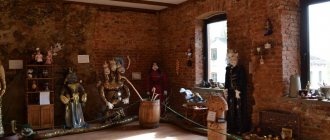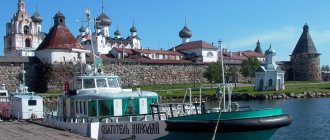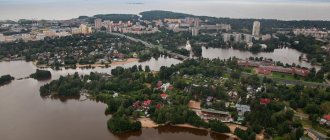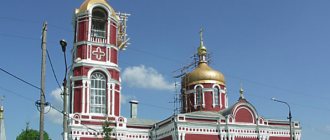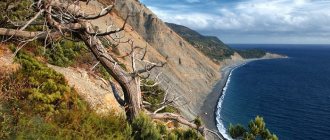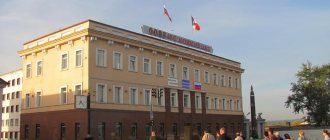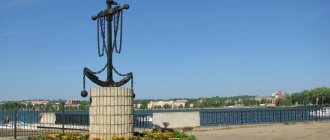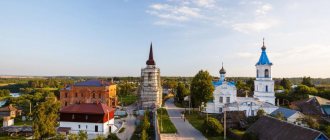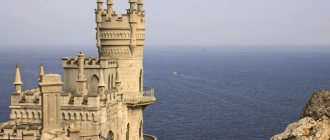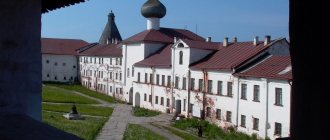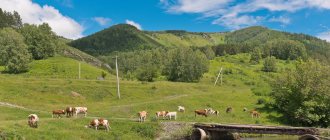Lake Onega
Lake Onega is one of the main natural decorations of Karelia. On its banks you can find everything your heart desires - healing minerals, ancient churches, rock paintings. For a long time, local residents affectionately called the lake Onega or respectfully Onego-Father. People come here to admire the picturesque sunsets, breathe fresh air, and recharge their batteries. The pearl of the lake is considered to be the island of Kizhi, on which the open-air museum of the same name is located.
Karelian pearl
Almost 80% of the lake’s water surface belongs to Karelia. There is a little Onega in the Leningrad region and the same amount in the Vologda region. From a geological point of view, the lake is a basin of tectonic origin, which is located at the junction of the Baltic shield and the Russian platform. The cities of Petrozavodsk, Kondopoga, and Medvezhyegorsk are located on the banks.
The lake stretches from north to south. The length is 248 kilometers, the width is 96 kilometers. The total length of the coast exceeds 1800 kilometers! Such a huge figure appeared due to the highly rugged coastline. The map clearly shows that the northern coast is literally striped with narrow bays and bays. All this is the result of the activity of a glacier, which ironed the territory and left behind deep furrows, which were subsequently filled with water.
If not for fresh water, Lake Onega could easily pass for the sea
If it were not for fresh water, Lake Onega could easily pass for the sea. Among European lakes in size, it confidently takes an honorable second place. In Russia, Onega is second only to Baikal and Ladoga. The average depth is 30 meters, but there are depressions 120 meters deep. For comparison: the average depth of the Sea of Azov is 7.5 meters. The transparency of the water reaches eight meters. Far from populated areas, the water from the lake can be drunk. Onega is the largest repository of clean drinking water on the planet.
About fifty rivers flow into the lake, and one flows out - the Svir. This makes Onega similar to Baikal, into which many rivers also flow, and only the Angara flows out. Svir connects Lake Onega with Ladoga. In fact, it is a channel 224 kilometers long. The lake is connected to the White Sea by the White Sea-Baltic Canal. The Suna, Shuya and Vodla rivers feed Onega best with water - they are the largest. There are 1650 islands on the lake! The largest is considered Bolshoi Klimetsky. Kizhi Island is smaller in size, but it is more famous.
Ferry crossing across the mouth of the Svir
The average January temperatures in these parts are minus 11 degrees, July – plus 16 degrees. At the end of December, the coastal zones freeze, and in January the entire lake is covered with ice. The thickness of the ice reaches one meter. The open part of the lake is freed from the ice shell in May. In August, the water warms up to 24 degrees in shallow water, but at depth the temperature does not exceed six degrees even at the height of summer. Storms are possible on the lake. In 2008, five-meter waves destroyed the embankment in Petrozavodsk.
Etymology
The exact origin of the name is unknown. In ancient Russian writings it sounds like Onego. For example, academician A.M. Sjögren believes that it comes from the Finnish word ääni, which can be translated as “sound”: it turns out to be a “noisy, sounding lake.” Another version suggests a reference to the Sami languages. A.L. adheres to it. Pogodin: agne can be translated as “sand”, and jegge – “low-lying plain”.
Under the supervision of scientists
Geologists claim that 400 million years ago the entire area around Lake Onega was the bottom of a shelf sea. The modern relief was formed during the next glaciation, which ended 12 thousand years ago. When the ice melted, a basin filled with water formed. The original dimensions of the reservoir were significantly larger than the current ones. However, as a result of water flow along the Svir River over thousands of years, the level dropped by 20 meters, and the lake took on the appearance that we see now.
The first Russians on the lake were the Novgorodians, who were moving towards Pomerania. In 1566, Onega was visited by agents of the London Trading Company, who were traveling from the White Sea to Veliky Novgorod. They left the first hydrographic descriptions of the lake. Onega was mapped in full in the 17th century, but the image was largely erroneous. Only in 1728, surveyor Akim Kleshnin created the first map of Karelia based on instrumental survey, and Onega acquired more accurate outlines.
Monument to Peter I in Petrozavodsk
Lake Onega became of strategic importance under Peter I, as it was part of the route from the Baltic to Arkhangelsk. During this period, the Academy of Sciences was closely involved in studying the lake. Entire expeditions were equipped to Onega. The most productive research was carried out by Academician Ozeretskovsky, who traveled around the lake in the summer of 1785. In addition to hydrographic data, he described minerals and attractions. Even then he noted the beauty of the Church of the Intercession on the island of Kizhi.
Fishing
The bottom of the reservoir is characterized by sharp changes in depth, forming underwater ridges and depressions. Such conditions are considered favorable for the life and reproduction of fish. In total, there are about 50 varieties of them in Lake Onega, including:
- lake salmon;
- smelt;
- sterlet;
- zander;
- saberfish;
- trout;
- perch;
- burbot;
- whitefish;
- silver bream, etc.
Fishing is carried out in the reservoir on an industrial scale. Amateur fishing is a separate area of an exciting holiday.
Fishing, © Victor Bashkir
Onega megacities
Lake Onega is a real Eldorado for tourists. Many interesting attractions are located in coastal cities. First of all, this concerns Petrozavodsk, which is the Karelian capital. You should definitely take a walk along Onega Embankment - this is the most romantic and beautiful place in the city. From the embankment the lake opens up in all its beauty and freshness. On the Alley of Contemporary Art you will find many unusual sculptures. There are also those who make wishes come true. Be sure to take a photo at the monument to the Birth of Petrozavodsk.
Onega embankment
The city has several unusual museums. Shungite Center, Tatiana Kalinina's Doll House, Museum of Precambrian Geology - the names speak for themselves. Of interest are the Gallery of Industrial History, the Maritime Museum “Polar Odyssey”, and the National Museum of Karelia. You can have a delicious lunch in an authentic atmosphere at the Karelian Gornitsa restaurant, and listen to unusual music at the Kantele House. Souvenir shops sell products made from shungite and Karelian birch, which are considered the hallmark of the region.
The second large city of the Onega region is called Kondopoga. It is located 55 km north of Petrozavodsk. The city is located on the picturesque shore of Kondopoga Bay. It is believed that its name comes from the Karelian words “kondi” and “pokhya”, which can mean “bear corner”. A settlement on this site was first mentioned in chronicles in 1495. The surroundings of Kondopoga became widely known when marble was found near the village of Tivdiya in the mid-18th century. Many palaces and cathedrals in St. Petersburg are decorated with this stone.
Since the middle of the 18th century, marble was mined in these places
The most significant ancient landmark of the city is the Assumption Church. It was erected in 1774. The church is perched on a narrow cape in Chupskaya Bay and is considered a classic example of wooden architecture. It is best to get acquainted with the history of the region and the city in the museum of the Kondopoga region, where you will see scatterings of ancient artifacts, coins, and antiques. On the square in front of the Ice Palace, umbrella fountains and a carillon of 23 bells 14 meters high attract attention. It's hard to believe that the huge arched metal structure is a musical instrument.
And at the tip of the Bolshaya Bay, 150 kilometers north of Petrozavodsk, lies the city of Medvezhyegorsk. It is surrounded by picturesque rocks and hills overgrown with fir trees. During the war the city was destroyed almost to the ground. Three old buildings have been preserved, among which the most impressive is the former hotel of the White Sea Canal Administration of the NKVD of the USSR. The gloomy building is crowned by a tower, which is considered the tallest building in the city. Now the building houses the exposition of the local history museum.
It’s worth visiting Medvezhyegorsk to see with your own eyes the place where the film “Love and Doves” was filmed.
An outstanding architectural landmark is the wooden railway station, which was built at the beginning of the last century. A hipped roof with a spire rises above the building, which makes the station look like an ancient tower. Of interest to tourists is the Museum of the History of Railway Transport.
One of the visiting cards of the city is the pedestrian Kisses Bridge over the Kumsu River. And on Mount Lysukha, which during the war was part of the Finnish fortified area, the ruins of fortifications have been preserved. In 1984, director Vladimir Menshov filmed the legendary film “Love and Doves” in Medvezhyegorsk.
Lake surroundings
This unique body of water is distinguished by its complex shape and uneven shoreline. The southern and northern outlines of Lake Onega differ significantly. The southern part is a vast stretch with various shores, where there are sands, swamps and rocks. The coastline here is quite smooth, and the coast itself is low and flat. Spring floods in the area are often accompanied by flooding of the area. On the rugged line of the northern part there are protruding, glacier-polished boulders and rocks. And elongated, narrow bays, which are chosen by windsurfers, lovers of boats, kayaks and sailboats. Among the most popular “lips”:
- Unitskaya - 45 km;
- Lizhemskaya - 35 km;
- Kondopoga - 32 km;
- Petrozavodskaya - 18 km and others. Large bays are navigable and equipped with jetties, moorings and anchorages.
The coast here is covered with thick pine needles. And the bottom of the reservoir is clayey, silty, and in places there is sand and stone. In the north of the lake there are many islands, the largest of which is Bolshoy Kliminetsky, and the most famous is Kizhi.
Open-air museum
The pearl of Lake Onega is the island of Kizhi, or rather, the museum-reserve of the same name, which contains examples of wooden architecture from Zaonezhie. The main rarity is the Church of the Transfiguration of the Lord. The openwork wooden temple with numerous domes is clearly visible from the pier. His age has exceeded 300 years. There are 22 domes in total, and the iconostasis consists of 102 icons. A long restoration of the church was recently completed, and today it looks like new.
The vast territory contains not only temples, but also domestic buildings - peasant houses, barns, mills, baths. Everything looks as if people still live in them. Antiques, master classes and colorful festivals allow you to immerse yourself in the atmosphere of antiquity and learn a lot about the life of the Karelian hinterland. Particularly impressive are the huge northern houses, where the entire household was housed under one roof. One could live in such a house all winter without going outside.
Kizhi
Craftsmen - weavers, gold seamstresses, lacemakers - work right in the houses. You can not only watch them work, but also try to do something with your own hands. Making wooden toys and beaded jewelry, knitting nets, weaving belts, spinning - this is not a complete list of crafts that you can learn in Kizhi.
Ruskeala waterfalls
How to get there: by car on the A130 highway;
by bus on the route Sortavala-Vyartsilya, stop “Ruskeala”; with an excursion, which can be booked either at the Northern Ladoga Museum: https://museum-sortavala.ru/ceny.html, or at a travel agency: https://kolmaskarelia.ru/ The waterfalls got their name from the village of Ruskeala, located nearby. The waterfalls are flat, so you won’t see “high water”. But appreciate the beauty of the surrounding landscape, which is praised by every single tourist who has been there. In combination with terraced ledges and trees, the brown-yellow, iron-rich water of the Ruskeala Falls looks unusual. Another nice feature is that the waterfalls never get smaller. Even in the midst of a hot summer, you will see a deep river and powerful streams of water.
On one of the waterfalls there is a log hut - a prop left after the film “The Dark World”. The episode “The Dawns Here Are Quiet” was also filmed here. The area around has now been improved - plastic figures and gazebos for relaxation have been installed.
Onega pastoral
Pastoral is rural life. On the banks of the Onega there are many ancient villages that are of interest to tourists. For example, 60 km south of Petrozavodsk there is the village of Shoksha. This settlement was first mentioned in chronicles in 1563. For a long time, crimson-colored quartzite was mined in the vicinity of the village. It was even nicknamed the “noble stone” because it was used for cladding palaces. Currently, quartzite outcrops near Shoksha and abandoned quarries have the status of a natural monument.
In the village of Sheltozero, on the southwestern shore of Lake Onega, a two-story house of the merchant Melkov with carved balconies, shutters and platbands, built in the mid-19th century, has been preserved. Now it houses the Vepsian Ethnographic Museum, which is dedicated to the history and culture of the Vepsians - a small people who have lived in the territory of what is now Karelia and the Leningrad region since ancient times. In the museum you can listen to Vepsian songs, try traditional Vepsian wickets, and ride a Finnish sleigh.
Vepsian house
In the village of Gimreka, located on the Voznesenye - Petrozavodsk road on the shores of Lake Onega, there is a stunning tented Nativity Church. It was built in 1659! The entire temple is decorated with carved wooden elements. The high bell tower can be seen from afar. Some icons from the iconostasis of the Church of the Nativity are exhibited in the Russian Museum. The village is located on the territory of the Leningrad region.
Nativity Church in Gimrek
It is also worth paying attention to the village of Shcheleyki. It is also located in the Leningrad region on the banks of the Onega. At this point the road goes very close to the water and offers a magnificent view of the lake. On the shore you can find cozy sandy beaches surrounded by mighty pine trees. True, swimming in Onega is cold even in summer.
The main attraction of the village is the wooden church of Dmitry Myrrh-Streaming with a tented bell tower, built in 1783. And between the villages of Shcheleyki and Gimreka there is a geological natural monument - rocky outcrops of gabbro-diabases, which are vertical cliffs up to 50 meters high, as well as picturesque smooth coastal cliffs, which are called “ram’s foreheads”.
Church of Dmitry Myrrh-Streaming in Shcheleyki
Relaxation on the pond
You can come to the lake in summer and winter, so recreation options depend on the season. In summer you can sunbathe on the beach, go on a trip across the water surface on a yacht or boat, cast a fishing rod or go mushroom picking. Many people prefer privacy in the forest area, while others enjoy the hospitality of private owners.
Entertainment organizers offer to enjoy the views of Lake Onega and the surrounding area by ascending in a hot air balloon, take part in hikes and excursions to local attractions, sit by the fire, plunge into healing fonts decorated with the local mineral shungite, and take a steam bath in a traditional Russian bathhouse. In winter, ski trails are laid along the snow-covered ice floor of the reservoir and in the nearby forests, dog sledding is organized, slides are flooded and holidays are celebrated cheerfully. There are even esoteric places here where unique rituals are performed with the participation of shamans. Just look at the Valley of Idols with three dozen symbolic boulders.
Boats on the lake, © Ekaterina
White nights are observed on Lake Onega in the summer months. According to local experts, mirages can be seen over its expanses in June and July.
In the vicinity of the reservoir there are many monuments of wooden architecture, so tourists often combine outdoor recreation with visits to architectural and historical sites. The main attraction of these places is the Kizhi Museum-Reserve, which contains an entire ensemble of unique buildings dating back to the 15th-20th centuries. The Kizhi churchyard of the 18th century, included in the UNESCO list in 1990, deserves special attention. Its complex includes the twenty-two-domed Church of the Transfiguration and the nine-domed Church of the Intercession of the Virgin.
In the eastern part of the lake there is an archaeological site dating back to the 4th-3rd centuries. BC e. The Onega petroglyphs, scattered over an area of more than 20 km, are rock carvings carved into stone, depicting people, animals, tools and boats. In total there are more than 1000 figures. The dimensions of some of them reach 4 m, and they are located at a height of up to 2.5 m.
Onega petroglyphs, © jasper17
Since 1972, a sailing regatta has been held annually in the water area of the reservoir. Cruising yachts take part in the competition.
Onega petroglyphs
Petroglyphs are the rock paintings of primitive people. A large “exhibition” of ancient painting is located on the eastern shore of Lake Onega, on Cape Besov Nos. This place is located near the village of Karshevo in the Pudozh region of Karelia. The drawings are carved on the horizontal surface of coastal rocks. Such formations are called “mutton foreheads.” What did ancient artists “paint”? Animals, solar signs, everyday scenes. Scientists claim that they appeared six thousand years ago!
The most convenient way to get to Besov Nos is by boat
In the mid-19th century, petroglyphs were discovered by geologist Konstantin Grevingk. The sizes of the “paintings” range from a few centimeters to three meters. Not far from the cape is the Murom Monastery. The monks not only declared the petroglyphs a manifestation of evil spirits, but also tried to knock out crosses on top of the drawings, and nicknamed the cape “Demon Nose.” The reason was the image of a huge dancing man with a square body and head, in whom they recognized a demon. The image size exceeds two meters.
Petroglyphs
There are petroglyphs on the nearby capes Peri Nos and Gazhiy Nos, as well as on the Kochkovnavolok peninsula, which is located near the village of Shalsky. The tiny island of Besikha is of interest. Its landmark is a non-working lighthouse. In terms of its scale, the Onega complex ranks fifth among the rock art monuments of Northern Europe after the petroglyphs of Alta and Vingen in Norway, Nemforsen in Sweden and the White Sea petroglyphs in Karelia.
Recreation centers
There are a huge number of tourist centers, campsites, hotels and guest houses on Lake Onega. Rental services for bicycles, boats and sports equipment are available in the developed areas. There are entertainment events, excursions, one-day and multi-day hikes organized here.
Rocky shore, © Ekaterina
The choice of stopping places to rest is quite large. There are budget, mid-price and exclusive accommodation options.
Hotels and apartments on Lake Onega
Famous islands of Karelia
Balaam
How to get there:
- From St. Petersburg by boat as part of excursion groups.
- From Priozersk by meteor: travel time 1 hour, cost about 2000 rubles. There and back again.
- From Sortavala by meteor - travel time 50 minutes. In summer, meteors occur daily at 9.00, 11.00, 13.15 and 16.00. The cost of round trip travel includes a walking tour: Mon-Fri and Sunday - 2300 rubles per person, Saturday - 2570 rubles per person.
- From Pitkäranta, meteors leave the pier of the Long Beach recreation center. Travel time 1 hour. The cost of round trip travel includes a walking tour: Mon-Fri and Sunday - 2460 rubles per person, Saturday - 2750 rubles per person.
Valaam Island is a unique place with its own unique nature, climate, architecture, and people. Every year, pilgrims and tourists from all over the world come here to touch these holy places.
There are many spiritual places on the island. Of course, the main temple of the island is the Spaso-Preobrazhensky Monastery, the construction of which dates back to the 14th century. On the territory of the monastery there is the Valaam Church, Archaeological and Natural Museum-Reserve, which tells about the history of the island.
The island itself is very green; after a walk along it you can visit the monasteries: Konevsky Igumensky monastery, Resurrection (Red) monastery, Gethsemane yellow monastery, St. Nicholas monastery, St. Vladimir monastery. Another monastery is located on the island of Putsaari. Visiting the skete is possible only with the blessing of the abbot.
City buildings: architectural diversity
Having been under the rule of different countries in different centuries, Sortavala is a mixture of architectural styles, although only from the 19th and 20th centuries: in 1903 there was a fire that destroyed almost all the wooden buildings of the Old Town.
First of all, walk along the streets, examine the buildings of the Sortavala district administration (Kirova Square, 11, “Northern Art Nouveau” style), the Post Office (Karelskaya, 19)
Regional Museum of the Northern Ladoga region (Ladoga Flotilla embankment, 5), Sberbank (Karelskaya st., 13, style - Finnish national romanticism)
The former gymnasium, and now a branch of PetrGU (Gagarina, 14), District Hospital (Sportivnaya, 1, pseudo-Gothic style), Sortavala College (Gagarin, 13).
Interesting are the Church of the Apostles Peter and Paul (Baroque), the house of the merchant Krasilnikov (Lenin St., 14, wooden building, Empire style), school No. 1 (Ladoga Flotilla embankment, 2, functionalism), the Town Hall, now the city library (Gagarin, 14, eclecticism).
